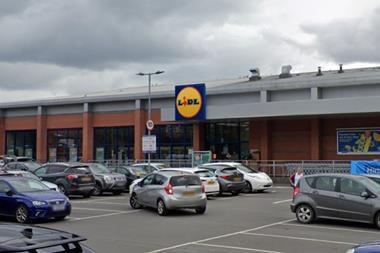The collapse of BHS gave the market a stark warning of what could happen to the brand that time forgot. Four years later a quarter of the stores remain vacant and with a tranche of department stores likely to follow, is repurposing the answer?

In 2017, department stores in the UK turned over £10.6bn. In 2019, this fell to £9bn - a reduction of 15% in just two years. In addition, 5m sq ft has already been lost from this retail sub-sector in the last five years alone as stores increasingly shut up shop.
So what’s going on? Covid-19 may have been the nail in the coffin for a number of stores, but it was by no means the cause of the decline. Ecommerce, tired branding and a lack of investment all play a role and while none of these factors spell the death of the concept as a whole, the sector is certainly at a crossroads. It would take a brave person to suggest that department stores no longer have any role to play in our retail places, but a braver one to imply that they can carry on as before.
In the UK, Savills is involved with 41 Debenhams and 10 House of Fraser repurposing projects as well as advising other large format retailers on their store strategies too. For example, in Kingston upon Thames, Frasers Group has received planning to repurpose an existing high street store into a 40,000 sq ft multi-format store with 33 residential apartments above. In Wandsworth, London, Savills has secured a new deal with active entertainment venue, Gravity, to acquire a former 80,000 sq ft Debenhams store and in Leeds, the city centre Debenhams will be converted into a range of alternative uses, with interest currently from the education, student accommodation and hotels sectors. These examples provide a snapshot of the wider activity that taking place across the whole of the UK, with appetite also growing from the life sciences, co-working and medical industries.
The process can be slow, but the proposition is an exciting one, albeit not without its challenges. The viability of a redevelopment must be considered, particularly when it comes to retrofitting different space requirements into what are often historic buildings. Financially, repurposing empty department stores requires significant capital expenditure, although it can be worth it to a landlord whose asset values may be suffering from the uncertainty of future income.
However, it’s not always clear who should actually pay for the redevelopment. If the retailer is wanting to downsize then arguably the incentive is for them, but more likely the liability falls to the landlord. Either way, there are often limited cash reserves available at present from either landlord or tenant to pay for conversion and so the majority we are seeing tend to be funded by landlords with deep pockets, or through a sale of the asset to a developer.
As we have seen across numerous examples in 2020, the year has formed the perfect storm for some operators, but for others it has been an opportunity to press the reset button and to come out stronger. Part of this regeneration has meant the consolidation of store networks with inevitable closures, downsizing and the subsequent repurposing opportunities. However, we believe that department stores will still have a place on our high streets for years to come where the location and offer is right, assuming that these businesses evolve and adapt.
For instance, Frasers Group, has achieved planning on an ex-Klas Ohlson store to convert the entire building with an additional trading floor on the first floor and 33 apartments above. The company is effectively creating a new department store by consolidating their various existing high street brands, including Sports Direct, Game, Jack Wills and Evans Cycles under one roof, as well as recently announcing plans to open three new flagships in the UK next year. Additionally, Flannels have announced plans to open a further 15 store across the UK over the next five years.
The future for existing department stores may look challenged but there is likely to be something of the Phoenix about them and the buildings they occupy. We will see renewed offers with new formats, rationalised floorplates and reduced portfolios but we must also be open to new department store concepts as much as embracing the opportunity for change and contemplating alternative uses.
Tom Whittington, retail and leisure research director at Savills





























No comments yet